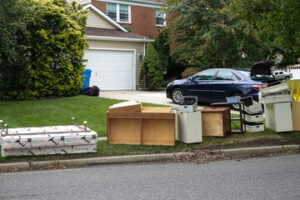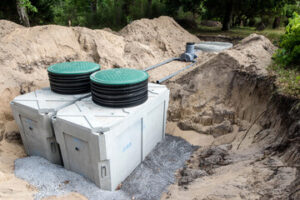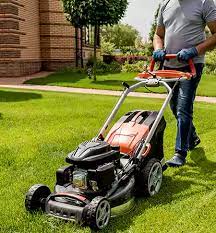No one wants to spend their day fixing a leaky faucet or repainting an office. But these little tasks add up over time, draining your energy and preventing you from getting to the more important things on your to-do list.
Handyman Lexington KY is a jack of all trades, but there are legal limitations to what they can and cannot do. To protect yourself and your customers, consider forming an LLC with ZenBusiness.

Handymen often perform various repairs, both large and small, around the home. This can include drywall maintenance and repair, such as patching holes or fixing nail pops. Many handymen also paint, stain or apply a new coat of varnish to wood furniture and baseboards. Window and door repair, including hinges and sash replacement, is another common service handymen offer.
Other handyman services may include plumbing, electrical work, and carpentry. Plumbers can fix clogged toilets or drains, and install or repair shower heads, faucets, and other bathroom hardware. Likewise, electricians can troubleshoot and repair basic electrical issues, like broken light fixtures or ceiling fans. Carpentry skills are useful for completing various tasks, such as building custom shelving, installing crown molding or chair rails, and putting together flat-pack furniture.
A good handyman should be able to interpret and explain problems clearly, whether in layman’s terms or technical ones. They should also be able to communicate with their clients about what they can and cannot do. This transparency establishes trust and helps avoid misunderstandings. Handymen should be able to provide accurate time estimates for projects and give clear breakdowns of what’s involved in the work.
Some handyman services are specialized for seniors, such as installing new deadbolts or doorknobs, and repairing stairways or railings. Some can even help with home improvements that improve accessibility, such as walk-in tubs or grab bars. Handymen are also able to wash windows for two- and three-story homes, as well as clean gutters.
A great handyman will have a wide range of skill sets and be able to tackle most home improvement and repair tasks. However, larger-scale renovations and structural repairs should be left to licensed contractors or engineers to ensure adherence with building codes and safety regulations. This is particularly important for HVAC installations and repairs, which require a thorough understanding of complex systems and the proper use of tools. Attempting such work without the appropriate knowledge can be dangerous for homeowners and result in costly repairs or violations. It is also recommended that a handyman stay away from any work involving gas lines or refrigerants.
Installations
Handymen often work as a jack of all trades, meaning they have many skills and can complete various types of maintenance and repair tasks. They are often licensed in multiple areas, such as plumbing and electrical work, to perform more specialized services for their clients. Licensing can expand the range of home services a handyman can provide and improve their credibility with potential customers.
A typical handyman service list can include basic carpentry, plumbing and electrical tasks as well as painting and other home decoration projects. They can build and install shelves or interior storage solutions, replace doors, hang mirrors and other wall hangings, paint walls and ceilings, touch up door and window frames, sand furniture and floors, and apply new caulking in bathrooms and kitchens.
Other common handyman services include cleaning up gutters and drainpipes, washing windows, mowing lawns, trimming hedges, and repairing fences. These types of outdoor maintenance and repair services can help keep a property looking neat and tidy and increase its value and curb appeal.
Minor electrical repair is another frequent handyman task, including switch replacements and fixture installations. Handymen should adhere to all applicable laws and safety standards when performing these duties, which will protect them and their clients from any hazards or fires.
Drywall installation and repairs are also common handyman services, such as patching holes, installing new drywall, and repairing existing drywall panels. Handymen should always check building codes and obtain permits if they are making structural modifications to a structure, so that it complies with all local regulations.
Many states have restrictions on the scope and cost of work that a handyman can perform. This helps to protect homeowners from unscrupulous workers who try to take advantage of unaware consumers. It can also prevent handymen from taking on projects that are outside their capabilities, which could put them and their clients at risk of injury or property damage.
A general contractor, on the other hand, has a more defined role in construction projects. They are responsible for overseeing the entire project and making sure that it is completed within allotted timeframes. They may use subcontractors to complete some of the construction tasks and are generally held accountable for the quality of work performed by those contractors.
Painting
Painting is a key home improvement project that can dramatically alter the aesthetic of your living space. Whether you’re looking to give your home a fresh new look or simply protect surfaces from damage, hiring a painting handyman can save you time and money in the long run. Hiring a professional can also help ensure that your paint job is done properly with high-quality materials and tools. This can result in a better finish that lasts longer, which can reduce the need for regular touch-ups and repainting.
Paint is an expensive product, and it’s important to use the best quality you can afford. Handymen who specialize in paint projects can recommend the right type and quality of paint to suit your needs and budget. They can also provide helpful insights and tips to help you achieve a successful painting project, including proper preparation techniques. They can also advise you on color options and trends to elevate the aesthetic of your home.
Another factor that can influence the cost of your painting project is the number of coats required. Most professional painters recommend applying two coats to ensure full coverage and a durable, lasting finish. However, if you’re interested in a single coat, your handyman can advise you on the most economical option.
Additionally, it’s essential to paint your house when the weather is warm and dry. Painting in humid or rainy conditions can lead to poor results, and moisture can cause your paint to bubble and blister. A handyman who specializes in painting can help you plan the timing of your project to avoid these issues.
A handyman can help with all types of painting projects, from small room repainting to entire exterior renovations. They have the skills and tools to ensure a flawless result, and they can complete the project quickly and efficiently. They can also handle the details that you might not want to tackle yourself, such as caulking or cleaning grout. In addition, a handyman can help with other important tasks such as drywall repair and installation, furniture moving, and electrical work.
Flooring
Flooring often takes a beating, and scuffs, scratches, and tears are commonplace. Replacing it can be expensive, but a handyman can often make small repairs that extend the life of your flooring.
Many people opt for vinyl flooring in their homes because it is durable, comes in a variety of colors and designs, and costs less than other types of flooring. A handyman can help you choose the right type of vinyl for your home, prepare the subflooring, and install your new flooring.
When you are looking to spruce up your kitchen, consider a new backsplash. Handymen can install a kitchen backsplash to add color, texture, and protection to your wall. They can also help you choose the right tile, cut it to size, and then install it in a pattern that fits your space.
Handymen can be hired to do power washing for exterior surfaces such as patios, sidewalks, driveways, and roofs. Power washing helps to keep these areas sanitized and free of debris that can lead to discoloration. Handymen are also able to perform basic landscaping services such as planting and mulching.
Door hinges and knobs can suffer from wear and tear, and it’s not uncommon for them to break or become loose. A handyman can fix or replace these, or hang a new door for you.
While most handymen are jacks of all trades, some may specialize in a specific area. If you need a handyman to work on a very specific project, be sure to ask them about their experience and qualifications. You may also want to ensure they are licensed to work on your project, such as a contractor, which can vary by state.
If you are a professional handyman who would like to streamline your business, try using Jobber. With this app, you can build a list of all the services you offer and attach a price to each one. This makes it easier for you to quote jobs quickly and accurately. And with a simple online booking form, customers can book appointments at their convenience.





